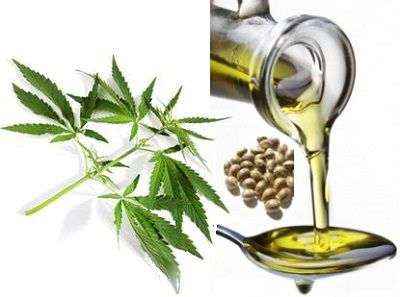Unlike the fast pace and excitement of Summer, Autumn is a time of winding-down, taking stock, and preparing for the long winter months ahead.

Fresh grains, nuts, fruits such as apples and pears and berries such as cranberries are typical of the Autumn season, and they all offer wonderful natural properties that nourish, protect and nurture our skin and bodies.
Quite often, major skincare companies attempt to reflect natural ingredients that are typical of each season, and to use those natural ingredients accordingly in customers' skin care routine.
Autumn is the perfect time to look after your skin after the intense, and often damaging and dehydrating, effects of the summer months and over exposure to UV. Wearing and SPF of 30+ is just as important now as it was in the Summer, and I truly believe that protection and prevention are key in effective skin care.
Below are some of my favourite Autumn natural ingredients and their use in skincare:
Marigold (Calendula officinalis)
Witchhazel (Hamamelis virginiana)
Cranberries (Oxycoccus palustris)
As autumn fast approaches, here are seven tips on how to keep your skin beautiful in cool weather. When temperatures plummet, a seasonal wardrobe change helps protect most of your body from the elements. However, your face and hands will still be exposed, and even areas protected by clothing can be affected by a harsh climate. An autumn skin-care regime can help ensure your delicate features fare well even as blustery winds blow.
Sunscreen smarts
Most people know that slathering on the sunscreen is a must when heading to the pool or beach, but your skin can actually take a hit from the sun’s damaging rays all year round. Apply a sunscreen lotion or moisturiser containing SPF daily to reduce the risk and minimise your chances of sun spots and wrinkles.
Healthy hydration
When it’s hot, you’re more likely to feel thirsty and drink more, but staying well hydrated is important in colder weather, too. Proper hydration affects numerous body functions, such as ensuring your muscles and joints are well-lubricated and helping your body to regulate its temperature. Water is the solution most experts recommend, but non-sugary options like tea can also help.
Food factors
Although limiting the amount of fat you consume is generally recommended for a nutritious eating plan, in the autumn and winter it’s especially important to be sure you’re consuming enough healthy fats and Omega-3s to promote moisture from the inside out. Good sources include eggs, nuts, avocados and lean proteins like fish, turkey, chicken and beef.
Clothing concerns
Even if you don’t feel the chill, cold wind can do a number on your skin. Be sure to cover up adequately when outdoors to prevent the chapping and irritation that can come from sustained exposure. Also be wary of precipitation; be sure your outer layers repel water and that you can change into dry clothing promptly if you do get wet.
Ample exercise
Avoid irritants
Especially if you have sensitive skin, cool wind can be brutal. Take care to avoid potential problems by sticking to softly textured fabrics that won’t get itchy. Take it easy on the exfoliating and be mindful of skin care products, soaps and detergents that may be particularly drying to already parched skin. Also skip the temptation to warm up in a hot shower, which can dry your skin even further.
Manage moisture
Even oilier skin types may need extra moisture when dry, cold conditions prevail. Oil-free options let you add moisture without over-stimulating oil glands, while natural oils such as coconut or jojoba are ideal for dryer skin. Apply a lotion after every shower to trap in moisture and as needed throughout the day to prevent chapping and cracking, and give special attention to areas that are prone to damage, such as your lips and hands. Find more ways to weather through this winter at eLivingToday.com.
Ways to perfect a carefree style
A carefree style may appear effortless, but creating a look that stands up to a busy day still requires some simple work. Keep your skin in top condition and your hair and makeup on point with these tips from the beauty experts at US department store Macy’s to help you look and feel your best.
Protect your skin
If there’s only one skin care product you use, it has to be sunscreen. Not only is daily SPF important for avoiding sunburn, it also helps prevent wrinkles and spots caused by sun damage. Apply early and often, and don’t be fooled by a cloudy day. Even when skies are overcast, those UV rays can inflict plenty of harm. If you’ll be out for an extended period, consider a stylish hat to lend extra protection to your scalp, ears and face. Also remember to cover or apply sunscreen to often-overlooked places, such as the tops of your feet.
Go for all-day eyes
When you’re embracing a laid-back look, a fully done eye can be overkill. A basic tint and some mascara is a simple way to achieve a put-together but fuss-free style. Using a waterproof formula can give you the confidence that your lashes are in perfect condition and ready for whatever the day may bring. If you have a favourite formula, check to see whether a waterproof version is available.
Make it matte
For lip colour that lasts from sunrise to moonlight, matte lipstick is the real deal. In addition to being long-lasting, matte lipsticks pack an intense punch of colour perfect for a bright and cheerful lip. If a little sparkle or shine is more your thing, go ahead and add a light layer of clear gloss and give yourself bonus points if one layer or both include SPF.
Explore new ideas
Pamper yourself with products you already love but explore new ideas and discover all-new cleansers, serums, moisturisers and a mask that will help .... Face oils can also do wonders on your skin.


